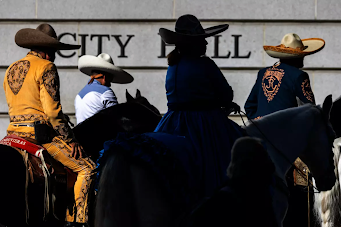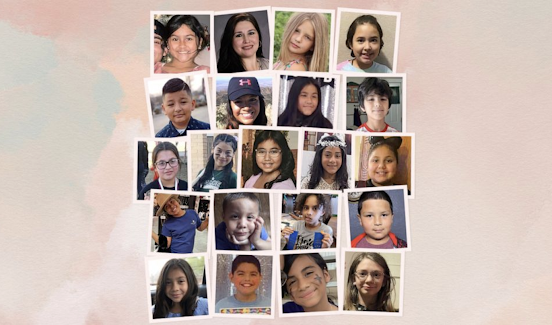Director emeritus, Institute for Rural Journalism, University of Kentucky
 |
| The mistaken front page |
On Sept. 5,
The Hutchinson News in central Kansas greeted readers with a front-page feature about the
Hutchinson Senior Center, with a photo of seniors kayaking on a lake with a thickly forested shore. But that’s not the landscape in Hutchinson, pop. 40,000, or the name of its senior center. The story was about the center in Hutchinson, Minnesota, and was written by a confused freelancer who got the assignment from a
Gannett Co. editor 140 miles away, in Bartlesville, Oklahoma, because the News had no news reporters on its staff.
What Gannett’s public-relations office called an “oversight,” in declining an interview about the flub, reflected the shrinkage of American newspapers, which finally hit non-metropolitan America just before the pandemic. The one-two punch led to many closures and mergers, and to continued declines in the quantity and quality of small-town papers. But in some places, print and online start-ups are succeeding, showing that local residents still want local news and will pay for a good product.
In Hutchinson, a 16-year-old high-school debater, Michael Glenn, started
The Hutchinson Tribune on Substack on July 4; is publishing about five times as many local-news articles as The Hutchinson News, which prints twice a week; and says he and his partner, a local librarian, are starting to sell advertising for a growing audience.
Legacy newspapers are slowly adapting to the digital era, but many have not fully faced up to their greatest-ever existential challenge.
About two-thirds of weeklies are owned by chains, and the decline of most weeklies is visible in fewer pages, less news coverage and limited or non-existent office hours. In many towns, gone are the days when local residents could drop into their local newspaper office to place a classified ad or news item, and engage in conversation that could give the paper even more information, because the newspaper no longer has an office that is open to the public without appointment.
That’s the case even at some daily papers, such as the
Kentucky New Era in Hopkinsville and
The Paducah Sun, headquarters paper of
Paxton Media Group, one of the largest owners of non-metropolitan papers. In these towns of 31,000 and 26,000, respectively, an appointment is needed to enter the newspaper office.
Paxton recently bought five more newspapers from Gannett, which has been shedding smaller papers – largely by selling them to
CherryRoad Media, a firm created only three years ago by Jeremy Gulban, an information-technology entrepreneur. He now has more than 80 papers, 60 bought from Gannett, which he says ran them so far into the ground that some are proving hard to stand up.
The downward spiral of news, ads and circulation left most of those papers with two types of subscribers and single-copy buyers, Gulban said: "People who just like the ritual of getting the paper and really don't care what's in it ... and people who hold a position in town where they feel like they need to get the paper. . . . People who were truly looking for news had just given up and kind of moved on."
Retail advertising largely disappeared, he said, and “revenue from obits, legal and classified, was nearly double the display advertising in a lot of cases . . . so really, what you have is, you got a ghost newspaper, right? It really has no relevance in the community. And you know that's a vicious cycle.”
Gulban said he has invested in editorial and ad staff, most often hiring former employees, and that the fate of the papers will largely depend on their local leadership and the response of their communities. And he says printed newspapers will remain a core element of his business model; to that end, he recently bought the Hutchinson News printing plant from Gannett.
The demand for reliable local news has been demonstrated in Hutchinson and many other places in rural America. In some places with chain-owned dailies that have become ghost newspapers, or in places where chains closed county-seat papers, there are new print and online news outlets. Two examples are
The Community News in Macomb, Ill., and the
Logan-Hocking Times in Logan, Ohio.
Lynne Campbell, a former regional publisher for
GateHouse Media, which bought Gannett and took its name,
said at July’s National Summit on Journalism in Rural America that The Community News started on a copy machine, was distributed free three times a week at 40 locations, and “was full of brief bits of local news,” such as events, police logs and death notices, but not full obituaries, Campbell said. Now the paper has two paid editions per week and a midweek free edition, “so that everybody could get a little bit of the local news,” and is billing $40,000 a month, much of it in legal ads, since the Gannett paper, now called the
McDonald County Voice, “is down to less than a hundred subscribers” and no longer has a storefront, Campbell said. The county has 27,000 residents, most in Macomb.
In southeast Ohio, Logan is home to 7,200 people, in a county of 46,000, and the
Logan Daily News, with an office open just nine hours a week, and the Logan-Hocking Times, owned by Debra Tobin, a former editor at the Times. After she and several other staffers quit the
Adams Publishing Group paper, she started the Times online, charging $7.99 a month for access. “Within six months we had 700. We're over a thousand,” she said in July. “That wasn't good enough for me, though, because I wanted to do something else, because a lot of people don't have computers” or good internet access. “So I decided to do a print newspaper,” which is distributed free on Fridays, the day after the digital edition, and is funded by advertisers who sponsor pages.
While the demand for local news in non-metropolitan areas is being met in different ways, publishers are still searching for new business models.
 |
| Image from PBS NewsHour |
There is longstanding resistance among rural newspapers to raising subscription prices and single-copy charges, but
The Recorder in Monterey, Virginia, has charged $5 a copy since 2017, and when the pandemic eliminated most of its ad revenue, Publisher Anne Adams appealed to readers for donations and they helped her stay in business. Recently she has expanded her coverage area to a third county in the Alleghenies. Rural Great Plains publishers told
University of Kansas professor Teri Finneman that they recoiled from the idea of asking for donations, saying it would be an admission of failure or personal weakness. But other publishers have put donations into their business model, and more are exploring the option of going nonprofit so they can avoid income taxes, qualify for grants and offer their supporters tax deductions for donations. And as the story of Hutchinson shows, the demand for local news is driving different approaches.


























